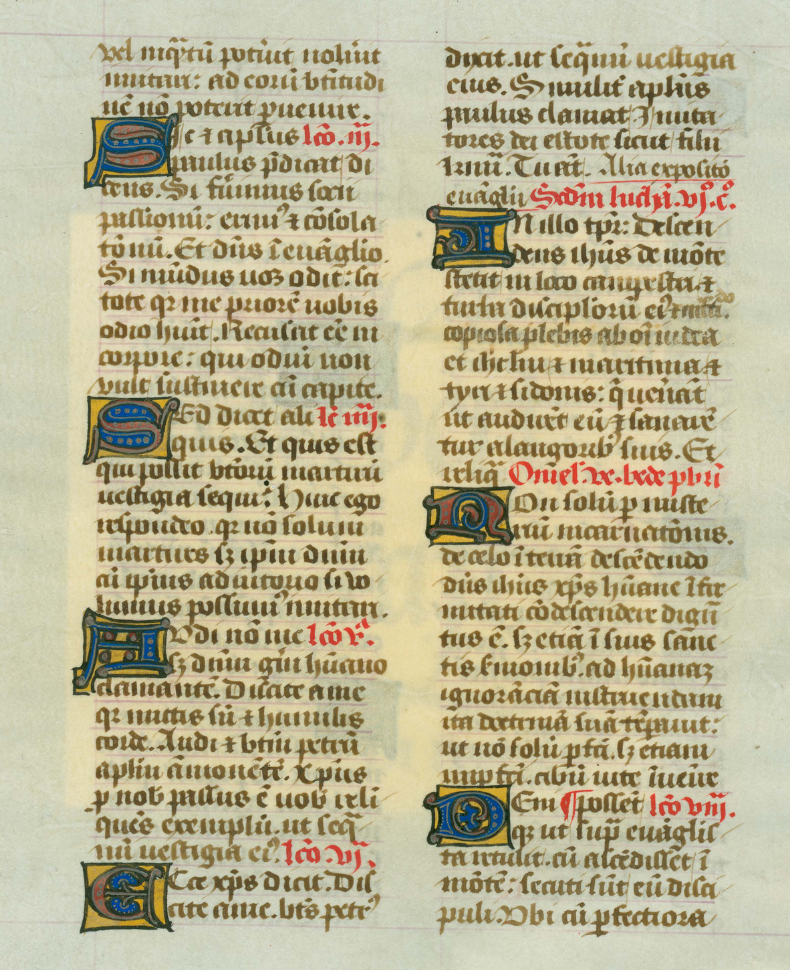Welcome to Manuscript Monday, where every week on Monday during the month of May different manuscripts in the Herbert Kraft Manuscript and Book Leaves Collection will be highlighted! The Herbert Kraft Collection consists primarily of pages from printed books, however there are a few handwritten manuscripts. In the overall collection, the dates range from 750-1950 CE, however in Manuscript Mondays Renaissance manuscripts from the 1400s-1600s will be focused on.
Manuscript Monday is a collection of blog posts written by Helen Jakubowicz, a junior anthropology and history student at Seton Hall. She interned with the Archives and Special Collections for the Spring 2025 semester, and enjoys working with material culture such as religious art and books. She was drawn to this collection not only due to their religious nature, but also because of Dr. Herbert Kraft himself, who was a professor of anthropology, as she wanted to delve deeper into his collection. She loved working with these sources and she hopes you enjoy exploring them as well!
Monday, May 5th
Leaf from a 13th century liturgical book, with “small letters, neat outlines, and the predominance of blue and gold making it unmistakably French in origin” according to Professor Kraft. To learn more about the Herbert Kraft Manuscript and Book Leaves Collection, see the link here.
Monday, May 12th
-
- Manuscript Breviary, 1430 CE (illuminated manuscript):Breviary: a book containing the service for each day, to be recited by those in the orders of the Roman Catholic Church (prayers of the canonical hours). This specific breviary was written in Flanders, which is a Dutch-speaking area in Northern Belgium. The pages contain large side panels decorated with bright colors of foliage such as flowers, berries, and leaves. There are also strokes of bright blue, which look like water coming out of the plants. In the text itself, the color continues. There are large illuminated drop caps of red and blue within the gothic script, all containing liquid gold.
- From Hortus (Ortus) Sanitatis, 1491 CE (early woodcuts): This woodcut contains details of the healing properties of specific natural elements such as bread, vegetables, herbs, and minerals. A surprising inclusion is cheese! From an image on the woodcut, there could be possible religious connotations to the cheese because there are crosses on them. There are many different copies of the Hortus Sanitatis in many different archives around the world. While Seton Hall only has a few pages, the Smithsonian Library has a full copy.[1]
- Latin Manuscript of South Italy, 1460 CE: In these pages from a Missal, there are color coded texts signifying what the speaker should do during that part. For example, the text written in red ink indicates the speaker to read silently to themself instead of to the whole congregation. There are also red and blue drop caps sprinkled throughout the text itself, giving the pages a pop of color besides the blocks of red text in the normal black.
Works Cited:
[1] Johann Prüss, Ortus Sanitatis, E-Book (Smithsonian Libraries, 1497), https://library.si.edu/digital-library/book/ortussanitati00prss.
